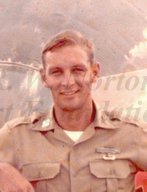
|

|
|
|
|
A resident of Bernice, Louisiana, where he lives with his wife, the former Peggy Bowlin, Ernie was born at Doctors Hospital in Shreveport, one of two children of Aaron Lyle Carrier, a butcher, and Elaine Hall Carrier, a native of Ringgold, Louisiana. Ernie had a half brother from his father's previous marriage, Bruce Carrier, whom he finally met at age 26. When he was a child the family was so poor Ernie wore clothes made from feed sacks. The Carriers lived in Bossier City, "off Yarborough Street on the levee," Ernie remarks. He says his closest neighbor was in Tuxedo Junction, an African-American section of town. Ernie began each day milking the family's three cows before school. He also maintained the family's five-acre gardens and ran "the largest paper route" in Shreveport and Bossier for the Shreveport Times and the Shreveport Journal. Meanwhile his mother worked at TG&Y, made flower arrangements, and drove a school bus for "forty-plus years." She was also head of the nursery at First Baptist Church in Bossier City. Upon graduation from Bossier City High School in 1964, Ernie worked for Howard, Needles, Tammen & Bergendorf a civil engineering firm. He had joined the Shreveport Times and the Shreveport Journal when he was drafted. Ernie took basic training at Fort Polk, then Advanced Individual Training at Fort Ord, near Monterey, California. In December of 1966 he entered Infantry Officers Training School at Fort Benning. "It was the toughest six months I ever spent," he recalls. After jump school and Ranger school he reached Vietnam in 1967 and was assigned as a platoon leader in C Company of 1st Battalion, 6th Infantry, 198th Light Infantry Brigade. During his eight months as a platoon leader he had only a single wounded soldier-himself. In one firefight he shot 28 of the enemy. Ernie received the first of his two Silver Stars for that action. He was assigned to a Mobile Advisory Team (MAT), in charge of a small regional force outpost in Bac Lieu province. He later became assistant psychological operations officer for 23rd Infantry Division (Americal), and briefed daily the division commander and his staff. As the commander rotated back to the states, he asked Ernie what job he'd like to have. Carrier asked for assignment as company commander of 3rd Battalion, 21st Infantry. He received C Company. In one battle atop a hill, on May 14-15, 1969, he and his company fought 1,500 North Vietnam Army regulars. Sixteen in his company were killed and the rest wounded. Ernie returned to California "about August 26 or 27th", he recalls, and by then was a captain with two Silver Stars, four Bronze Stars for Valor, three medals for Meritorious Service, the Army Commendation Medal, and Air Medal. At Fort Polk he served for 14 months as captain of a basic training company, then was sent back to Vietnam in December of 1970 to MAC-V (Military Assistance Command-Vietnam). He became camp commander for MAC-V Team 36, known as Military Region Two Ranger Command. He was in charge of all Special Forces camps. Later he became G-2 advisor to the command, and planned Arc-Light B-52 strikes. Ernie resigned his commission in 1972 and entered Northwestern State University in Natchitoches. He remained in the reserves, serving in an airborne ranger unit near Houston. In his civilian profession he worked in sales, in the oil fields, and in trucking. |


